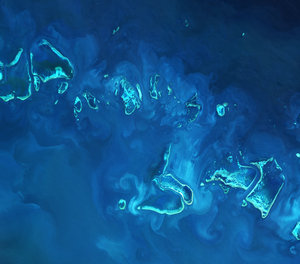Accept all cookies Accept only essential cookies See our Cookie Notice

About ESA
The European Space Agency (ESA) is Europe’s gateway to space. Its mission is to shape the development of Europe’s space capability and ensure that investment in space continues to deliver benefits to the citizens of Europe and the world.
Highlights
ESA - United space in Europe
This is ESA ESA facts Member States & Cooperating States Funding Director General Top management For Member State Delegations European vision European Space Policy ESA & EU Space Councils Responsibility & Sustainability Annual Report Calendar of meetings Corporate newsEstablishments & sites
ESA Headquarters ESA ESTEC ESA ESOC ESA ESRIN ESA EAC ESA ESAC Europe's Spaceport ESA ESEC ESA ECSAT Brussels Office Washington OfficeWorking with ESA
Business with ESA ESA Commercialisation Gateway Law at ESA Careers Cyber resilience at ESA IT at ESA Newsroom Partnerships Merchandising Licence Education Open Space Innovation Platform Integrity and Reporting Administrative Tribunal Health and SafetyMore about ESA
History ESA Historical Archives Exhibitions Publications Art & Culture ESA Merchandise Kids Diversity ESA Brand Centre ESA ChampionsLatest
Space in Member States
Find out more about space activities in our 23 Member States, and understand how ESA works together with their national agencies, institutions and organisations.
Science & Exploration
Exploring our Solar System and unlocking the secrets of the Universe
Go to topicAstronauts
Missions
Juice Euclid Webb Solar Orbiter BepiColombo Gaia ExoMars Cheops Exoplanet missions More missionsActivities
International Space Station Orion service module Gateway Concordia Caves & Pangaea BenefitsLatest
Space Safety
Protecting life and infrastructure on Earth and in orbit
Go to topicAsteroids
Asteroids and Planetary Defence Asteroid danger explained Flyeye telescope: asteroid detection Hera mission: asteroid deflection Near-Earth Object Coordination CentreSpace junk
About space debris Space debris by the numbers Space Environment Report In space refuelling, refurbishing and removingSafety from space
Clean Space ecodesign Zero Debris Technologies Space for Earth Supporting Sustainable DevelopmentLatest
Applications
Using space to benefit citizens and meet future challenges on Earth
Go to topicObserving the Earth
Observing the Earth Future EO Copernicus Meteorology Space for our climate Satellite missionsCommercialisation
ESA Commercialisation Gateway Open Space Innovation Platform Business Incubation ESA Space SolutionsLatest
Enabling & Support
Making space accessible and developing the technologies for the future
Go to topicBuilding missions
Space Engineering and Technology Test centre Laboratories Concurrent Design Facility Preparing for the future Shaping the Future Discovery and Preparation Advanced Concepts TeamSpace transportation
Space Transportation Ariane Vega Space Rider Future space transportation Boost! Europe's Spaceport Launches from Europe's Spaceport from 2012Latest

Kuwait
Thank you for liking
You have already liked this page, you can only like it once!
The Copernicus Sentinel-2 mission takes us over Kuwait in the Middle East. With a total area of around 17 800 sq km, Kuwait is considered one of the smallest countries in the world. At its most distant points, it is around 200 km north to south and 170 km east to west.
Situated in the northeast of the Arabian Peninsula, Kuwait shares its borders with Iraq to the north and Saudi Arabia to the south. Kuwait is generally low lying, with the highest point being only 300 m above sea level.
The flat, sandy Arabian Desert covers the majority of Kuwait and appears as a vast expanse of light sand-coloured terrain in this image, captured on 25 July 2019. During the dry season, between April and September, the heat in the desert can be severe with daytime temperatures reaching 45°C and, on occasion, over 50°C.
Kuwait City, visible jutting out into Kuwait Bay, holds most of the country’s population – making Kuwait one of the most urbanised countries in the world.
The various colours of Kuwait Bay come from a combination of wind and the amount of sunlight reflected off the waters. The Sheikh Jaber Al-Ahmad Al-Sabah Causeway can be seen cutting across the bay. The bridge is 36 km long – making it the fourth largest bridge in the world.
Al-Jahra lies around 50 km west of Kuwait City and is visible as a small, green oasis on the west side of Kuwait Bay. It is the centre of the country’s principal agricultural region – producing primarily fruits and vegetables. The circular shapes to the right of Al-Jahra are an example of the pivot irrigation or centre-pivot irrigation method, where equipment rotates around a central pivot and crops are watered with sprinklers.
Just south of Kuwait City lies the Great Burgan oil field – considered the second largest oil field in the world. The Great Burgan comprises three smaller fields: Burgan, Al-Maqwa and Al-Ahmadi. The oil fields can be identified an extensive network of interlocking roads which connect the individual wellheads.
Satellites, such as Copernicus Sentinel-2, allow us to capture images such as these from space, but also allows us to monitor changing places on Earth. Flying 800 km above, satellites take the pulse of our planet by systematically imaging and measuring changes taking place, which is particularly important in regions that are otherwise difficult to access.
This image is also featured on the Earth from Space video programme.
-
CREDIT
contains modified Copernicus Sentinel data (2019), processed by ESA -
LICENCE
CC BY-SA 3.0 IGO or ESA Standard Licence
(content can be used under either licence)

Earth from Space: Kuwait

Kuwait City collage

The Gulf

Rub’ al Khali desert















 Germany
Germany
 Austria
Austria
 Belgium
Belgium
 Denmark
Denmark
 Spain
Spain
 Estonia
Estonia
 Finland
Finland
 France
France
 Greece
Greece
 Hungary
Hungary
 Ireland
Ireland
 Italy
Italy
 Luxembourg
Luxembourg
 Norway
Norway
 The Netherlands
The Netherlands
 Poland
Poland
 Portugal
Portugal
 Czechia
Czechia
 Romania
Romania
 United Kingdom
United Kingdom
 Slovenia
Slovenia
 Sweden
Sweden
 Switzerland
Switzerland
























